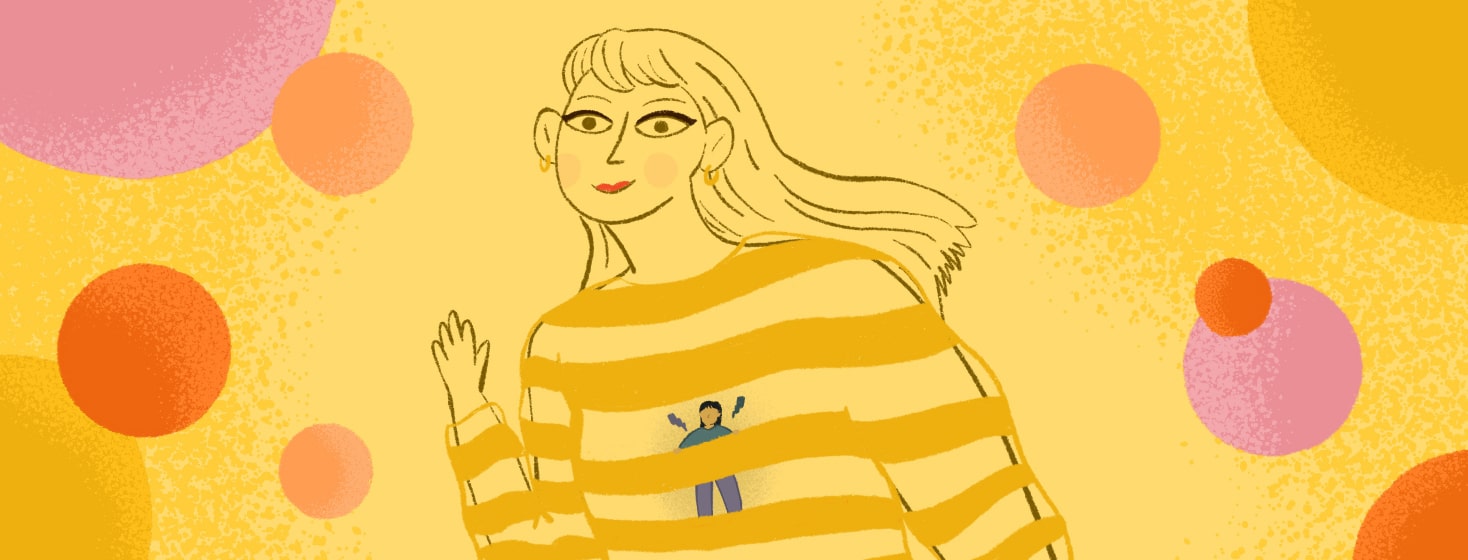The Downside of Covering Up How I Feel
I don’t like looking sick.
On days when I’m battling the pain or fatigue of AS it makes me feel better to try and look presentable. I’ll wear bright colours, wash and style my hair (if I have the energy) and disguise the shadows under my eyes with an extra layer of make-up.
I know this isn’t everyone’s approach but it’s something I’ve found helps me feel a bit brighter on the low days. It’s also a response to experiences I’ve had in the past where well-meaning people felt compelled to tell me “you look awful,” which I hated!
The downside to this approach is often when I feel my worst I end up looking just fine
Over the holiday period last year I became aware of how flawed this strategy is when relatives made a point of commenting on how well I was looking. Repeatedly. The truth was, I was utterly exhausted, but I’d made my usual effort to look nice for Christmas Day.
We only see most of our relatives once a year. They know I have AS but they are removed from the daily reality of what that looks like. They don’t know this year has been a tough one for me, complicated by a rough and extended bout of Covid, a prolapsed disc and a daunting new health diagnosis I’m not yet ready to talk about.
When they tell me how well I’m looking there’s an insecure little voice inside me wondering if they think I’m faking my diagnosis
That it can’t be that bad if I’m looking fine and hosting a big family lunch. Keeping up with the cleaning, cooking, decorating, serving and cleaning our celebration involved was huge, with willing helpers hard to find. There was a moment where I went to the cutlery draw only to find all the spoons were gone. It was such a great analogy for how I was feeling at that point, I had to laugh! (If you aren’t familiar with the Spoon Theory of chronic illness you can read about it here)
In the fog of exhaustion that followed our Christmas get together I gave a lot of thought to how I present myself, how that is perceived, and what I could do differently.
I rested and recovered, napped lots, and rebuilt what the holidays took out of me. I was worried that I’d flare, so I did everything possible to support my body and mind to stay well.
It’s the usual process that goes on behind the scenes which no one but my immediate family sees
I know I can’t have it both ways. I can’t set out to look well then resent it when people assume I’m fine. I can’t offer to host, then resent people for the huge amount of work it involves and how depleted it leaves me afterwards.
If I’m not prepared to let people see the reality of this illness and how it impacts me then how can I expect their empathy or support?
Living with invisible illness in a society that only wants to see the highlight reel will always be a challenge.
Navigating my own identity and insecurities, managing my desire to people-please and present myself in a certain way is still complicated ten years post-diagnosis.
It’s a fine line to walk, being fair to myself and asking for what I need while still wanting to be private about how much AS has affected who I am.
I haven’t figured it out yet, and I’m not sure I ever will.

Join the conversation